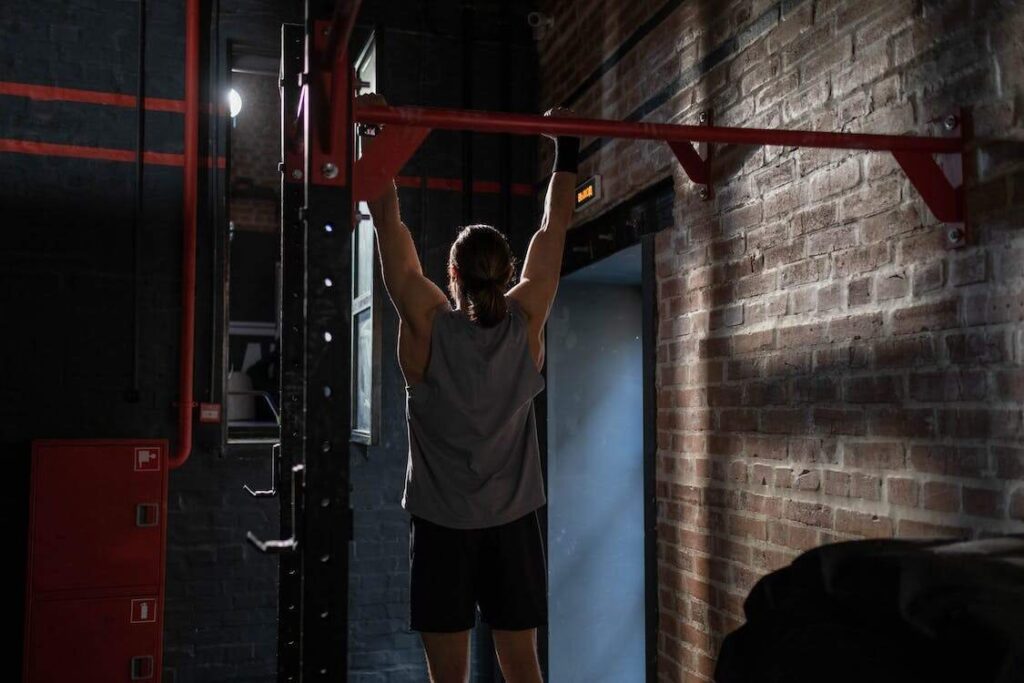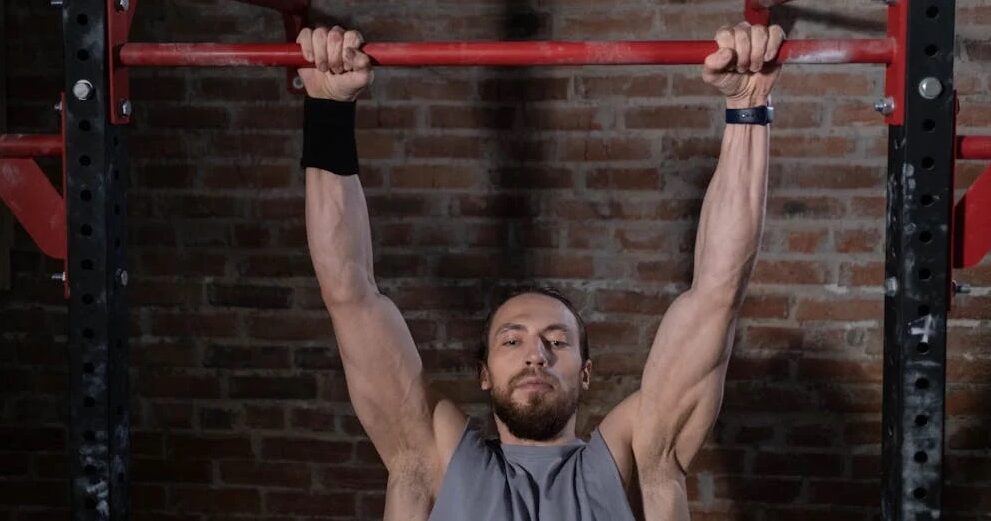As someone who grew up having to do pull-ups frequently while training for my sports, I’ve spent plenty of time hanging on the bar trying to muster the strength to pull myself up just one more time. Many years ago, before I ever heard of the dead hang as being an actual mobility exercise, I found that hanging from a pull-up bar was a phenomenal stretch for my upper body. I would often dead hang from the bar before and after working out or between sets of pull-ups.
In this blog, we’ll explore the various benefits of the dead hang, including improved grip strength, shoulder stability, spinal health, and more. We’ll also provide tips for performing the dead hang safely and effectively to ensure you get the most out of this exercise. So, whether you’re a seasoned athlete or just starting your fitness journey, read on to learn more about the benefits of the dead hang and how you can incorporate it into your routine.
Benefits of the Dead Hang
Improved Grip Strength: One of the most significant benefits of the dead hang is its ability to improve grip strength. Grip strength is crucial for many athletic activities, from weightlifting to even our cognitive health. Hanging from a bar requires a strong grip, and the longer you can hang, the stronger your grip becomes.
According to an article on Spartan.com, dead hangs are an effective exercise for building grip strength by placing a significant demand on the muscles of the forearms and hands, which are responsible for gripping and holding onto the bar. By performing dead hangs regularly, individuals can increase their grip strength, which can be useful in various activities such as weightlifting, rock climbing, and obstacle course racing. Additionally, the article notes that grip strength is a key indicator of overall strength and fitness, making dead hangs a valuable addition to any strength training or fitness program.
One case study explored the relationship between grip strength and cognition in older adults. It found that there was a significant correlation between grip strength and cognitive function, particularly in memory and processing speed. Therefore, maintaining grip strength through exercise could potentially benefit cognitive health in older adults. To improve your grip strength with the dead hang, start by hanging for as long as you can, gradually increasing the time as you get stronger. You can also try different grip variations, such as a mixed grip or a chin-up grip, to challenge your grip in different ways.
Improved Shoulder Mobility: Many people suffer from shoulder pain and stiffness, particularly those who spend a lot of time sitting at a desk or engaging in activities that require repetitive shoulder movements. The dead hang can help improve shoulder mobility by stretching the muscles and tendons around the shoulder joint. As you hang from the bar, your shoulders are in a fully extended position, which can help relieve tension and tightness in the muscles.
According to a study published in the International Journal of Sports Physical Therapy, hanging from a bar with arms fully extended in a dead hang position can activate the muscles responsible for stabilizing the shoulders. This exercise specifically targets the scapular stabilizers, which play a crucial role in maintaining proper shoulder alignment and preventing injuries.
This stretch can be particularly beneficial for people who spend a lot of time sitting or hunching over a computer, which can cause the shoulders to round forward and contribute to poor posture. Once you begin practicing the dead hang regularly, it’s actually quite amazing how well this exercise can help improve shoulder mobility, stability, and alignment. By incorporating this exercise into your fitness routine, you can enjoy these benefits and improve your overall fitness and well-being.
To perform the dead hang for improved shoulder and scapular stability, grasp the bar with an overhand grip and hang with your arms fully extended. Focus on engaging the muscles in your shoulders and upper back to keep your body stable and maintain proper alignment.
Better Spinal Decompression: Spinal compression is also a common problem for many people who spend a large portion of their time sitting or standing in one position. The dead hang can provide a natural form of spinal decompression by pulling your spine downward and lengthening the vertebrae.
Spinal decompression is crucial for maintaining spinal health and preventing injuries. The spine is a complex structure that consists of vertebrae, intervertebral discs, and various muscles and ligaments. The intervertebral discs are located between the vertebrae and act as shock absorbers, cushioning the spine during movements. Over time, these discs can become compressed, leading to a variety of spinal conditions such as herniated discs, sciatica, and spinal stenosis.
One study published in the International Journal of Sports Physical Therapy examined the effects of the dead hang exercise on spinal decompression. The study found that this exercise was effective in increasing spinal length and reducing pressure on the intervertebral discs, leading to spinal decompression. This can potentially benefit individuals with back pain or other spinal conditions. Therefore, the dead hang can be a useful addition to a stretching or exercise routine aimed at improving spinal health.
When performing the dead hang for spinal decompression, focus on relaxing your entire body and allowing your spine to decompress.
Improved Core Strength: Your core muscles play a vital role in stabilizing your body during physical activities, and the dead hang is an excellent exercise for strengthening your core. When you hang from a bar, your core muscles work hard to keep your body stable and prevent your legs from swinging.
As per a study published in the International Journal of Sports Physical Therapy, hanging from a bar with arms fully extended and the body relaxed in a dead hang position engages the muscles of the core, including the rectus abdomen, obliques, and erector spine. This exercise can lead to an increase in core stability and strength, which can be beneficial for daily activities and athletic performance. Therefore, incorporating the dead hang into a regular exercise routine could help individuals improve their core strength.
To perform the dead hang for improved core strength, grasp the bar with an overhand grip and hang with your arms fully extended. Focus on engaging your core muscles to keep your body stable and prevent your legs from swinging.
Tips for Performing the Dead Hang Safely
While the dead hang is a safe and effective exercise for most people, it’s essential to perform it with proper form to avoid injury. Here are some tips for performing the dead hang safely:
Use a sturdy bar or other elevated surface that can support your body weight.
Avoid over-gripping the bar, which can cause unnecessary strain on your wrists and hands.
Keep your shoulders relaxed and avoid shrugging them up towards your ears.
Engage your core muscles to prevent your legs from swinging.
Start with short hangs and gradually increase the time as your strength and endurance improve.

Conclusion
The dead hang is a straightforward exercise that packs a powerful punch in terms of its benefits. Despite its simplicity, this exercise can be highly effective for improving grip strength, shoulder mobility, stability, and alignment, making it a valuable addition to any fitness routine. This is an extremely versatile exercise that can benefit anyone, from fitness enthusiasts to office workers looking to relieve tension and improve posture. By incorporating this exercise into your routine, you can enjoy the many benefits it has to offer and improve your overall fitness and well-being.











